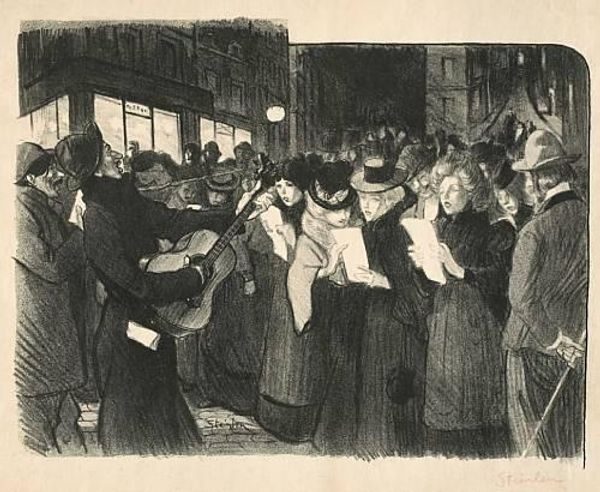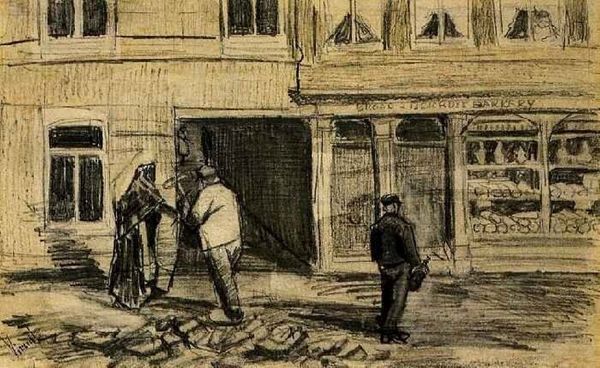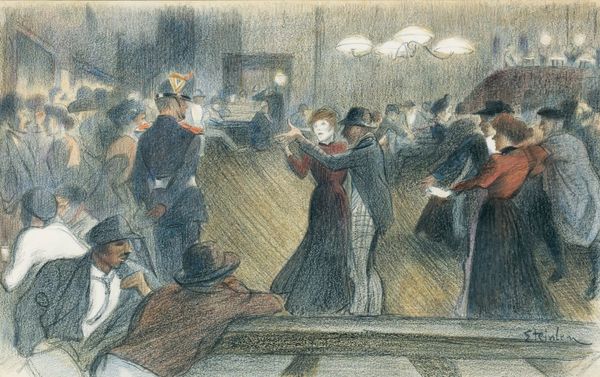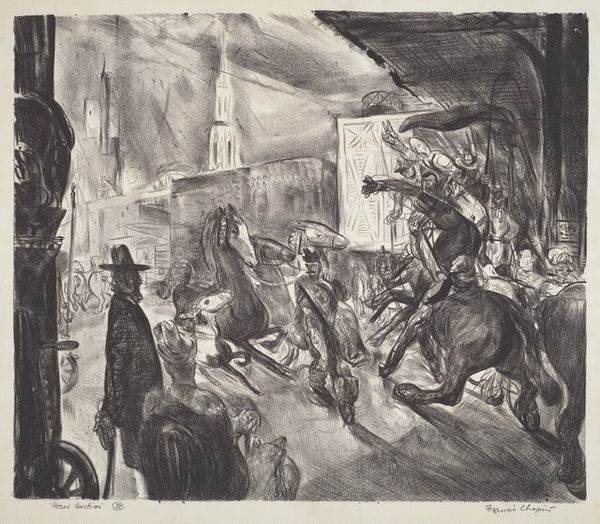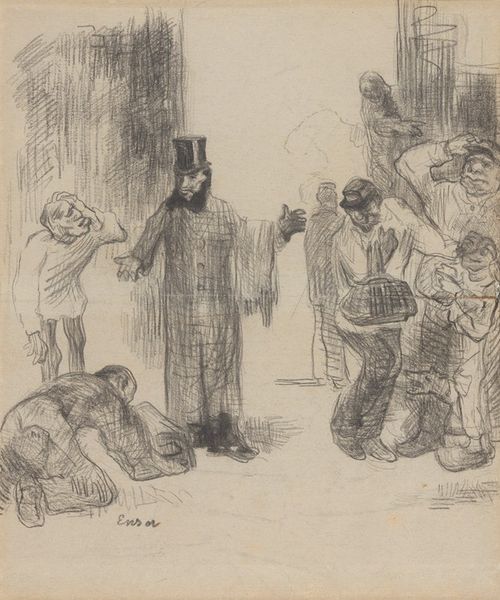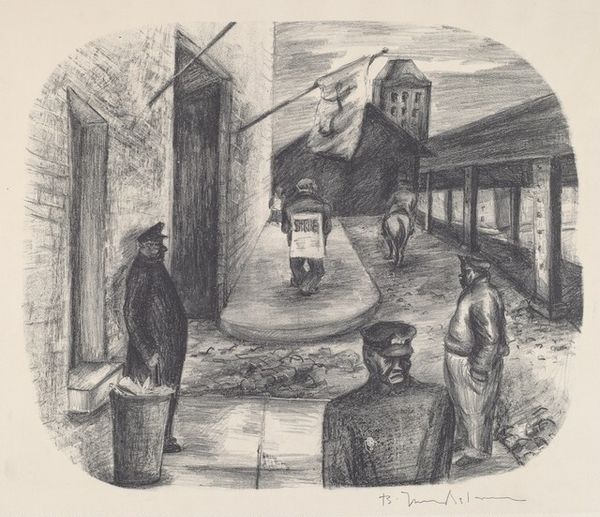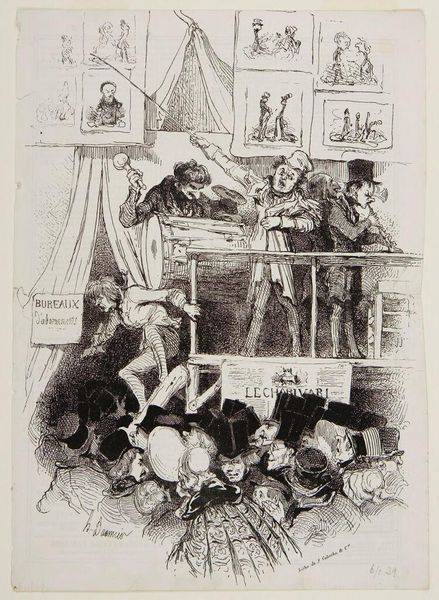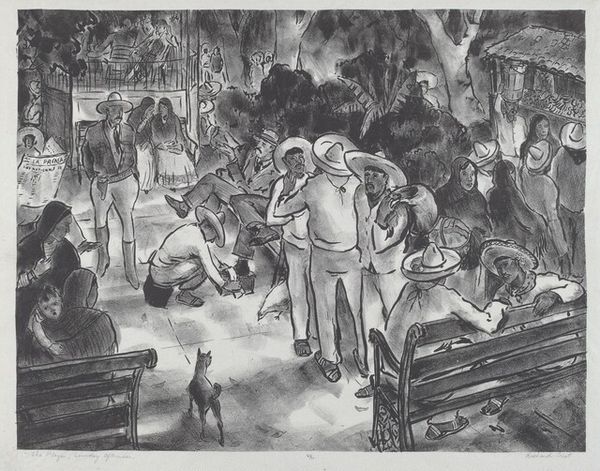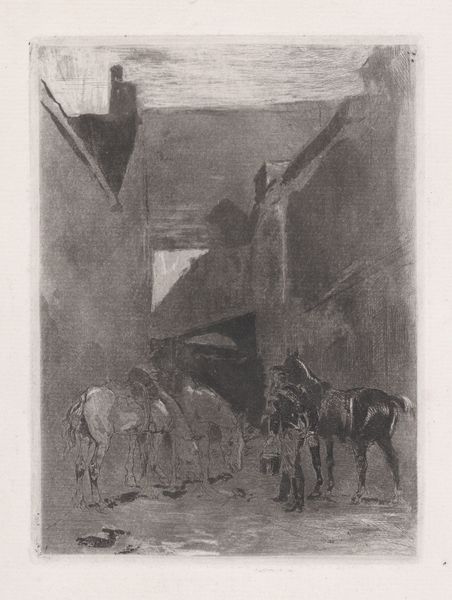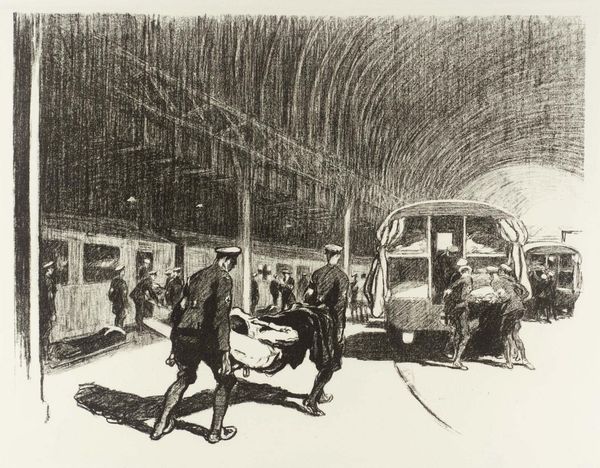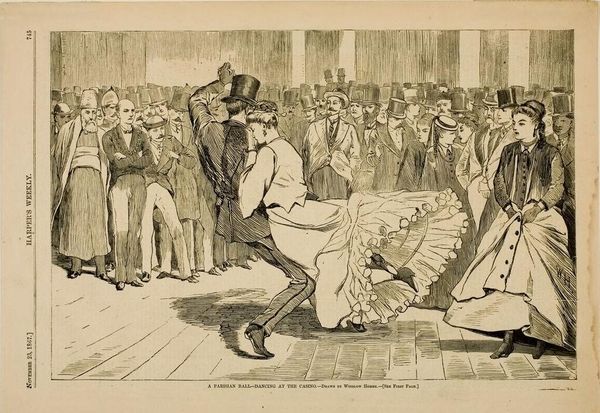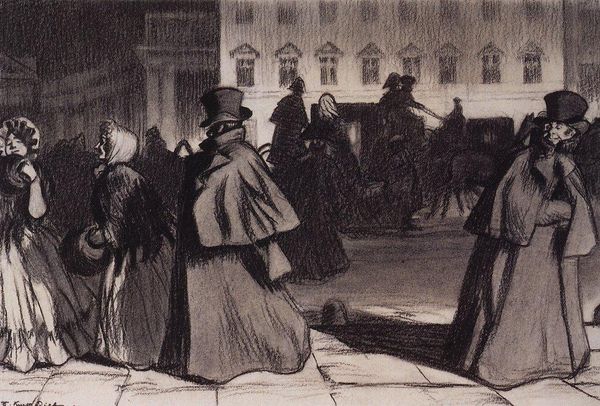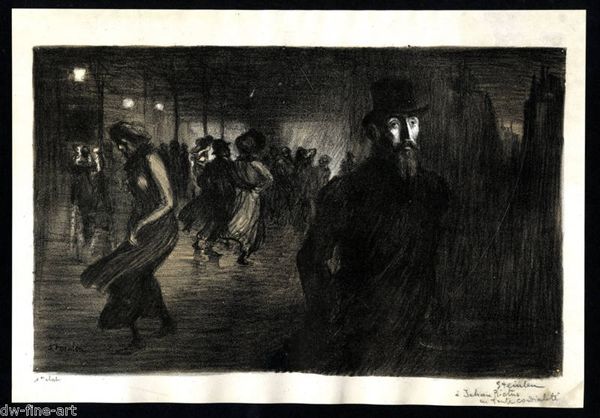
drawing, pencil, graphite
#
drawing
#
impressionism
#
landscape
#
pastel chalk drawing
#
pencil
#
graphite
#
genre-painting
#
street
#
watercolor
#
realism
Copyright: Public domain
Curator: Today, we're examining Vincent van Gogh's "Torn-Up Street with Diggers," created in 1882. It’s a captivating work rendered in graphite, pencil, and pastel chalk. Editor: It’s incredibly stark; the harsh lines and muted colors convey a sense of grueling labor and upheaval. There’s a lot of dark hatching creating tone, almost a graphic novel aesthetic to the texture. Curator: Indeed, the formal elements—the density of the graphite strokes, the somber palette—underscore the relentless physical effort depicted. Notice how the composition draws our eye toward the deep trench, an abyss carved into the urban landscape. Semiotically, the visual weight of the workers and their toil outweighs the architecture behind. Editor: Absolutely, and when you think about the sheer effort, not only what's required by the workers themselves, the literal digging but the effort in creating the paper, and producing graphite or chalk… The piece invites a material reading of labour, exploitation and physical creation at multiple levels. This wasn’t mass production; everything had to be done from scratch to yield something. Curator: The linear perspective, with its somewhat compressed depth, pushes the figures forward, emphasizing their presence. Van Gogh uses shadow and light not just to depict form but to create a dramatic contrast, pitting the laborers against the relatively static backdrop. Editor: And there's something about the roughness of the line, combined with the medium; graphite allows him to portray the texture of the dirt, the fabric of the workers’ clothes. You feel like you could reach out and touch the grit. Curator: A compelling synthesis of form and content. Editor: Yes. I’m leaving this artwork reflecting on how its composition embodies both labor and material origin, which brings such depth.
Comments
No comments
Be the first to comment and join the conversation on the ultimate creative platform.
